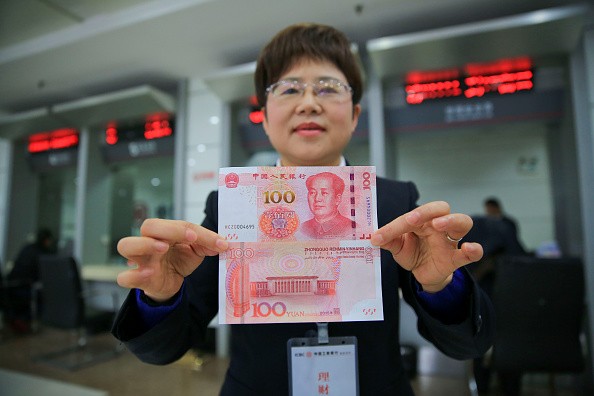There is no need to worry about a long-term depreciation of the yuan, a senior Chinese official said on Thursday, after China’s central bank lowered the daily fixed exchange rate to a four-year low of 6.4236 yuan per U.S. dollar.
Wang Yungui, department head of policy and regulation at the State Administration of Foreign Exchange, emphasized China's strong balance of payments position--which is reflected by a huge trade surplus and stable foreign direct investment--as key to preventing a sharp drop of the currency.
Still, the depreciation of the yuan is credited for the accelerated outflow of capital since November, Wang said. In November, foreign exchange reserves shrank by $87.2 billion to $3.44 trillion, its lowest level since Feb. 2013.
"That decline in reserves can be tolerated, as well as the amount and speed of recent cross-border capital outflows," he said.
Wang added that China is also studying financial tools like the "Tobin tax," which is a type of tax for currency transactions on cross-border capital, to limit outflows. According to Wang, such measures could be applied in the future to stifle potential risks once the market is further opened.
The current depreciation pressure of the yuan originates in part from market expectations that the U.S. Federal Reserve will increase its interest rate, coupled with the cooling economic growth in China.
The yuan's onshore spot rate, which was limited to a maximum 2 percent move up or down around the reference rate, was extended a five-day drop, reaching 6.4433 yuan per dollar by noon on Thursday, the lowest level since August this year following the announcement from the People's Bank of China that it would switch to a new exchange rate regime based on the currency's real supply and demand in the market.
The yuan-to-dollar daily reference rate fell to 6.4140 on Wednesday--its lowest since Aug. 2011--influenced by the selling pressure in markets both onshore and offshore.
It has depreciated by about 0.42 percent since it was included in the International Monetary Fund's Special Drawing Rights basket on Nov. 30, which made it one of world's five reserve currencies with a "freely usable" designation.
"We believe the People's Bank of China has been more 'hands-off' after the Special Drawing Rights announcement. This is in line with its commitment to a more liberalized foreign exchange regime," said Wang Ju, a senior Asian Foreign Exchange strategist at HSBC Holdings.
In a news conference, central bank Vice Governor Yi Gang said that the stated goal of a "free floating" currency, without intervention from the government, indicates that the foreign exchange regulator may slowly be warming up to higher exchange rate volatility.
Market observers, however, remain skeptical that the downward pressure of the yuan is over, considering the incoming rate hike from the U.S. Federal Reserve.
The rise of the Fed rate will raise the U.S. dollar's value and increase depreciation pressure on the yuan, China Daily newspaper said in a report on Friday.



























